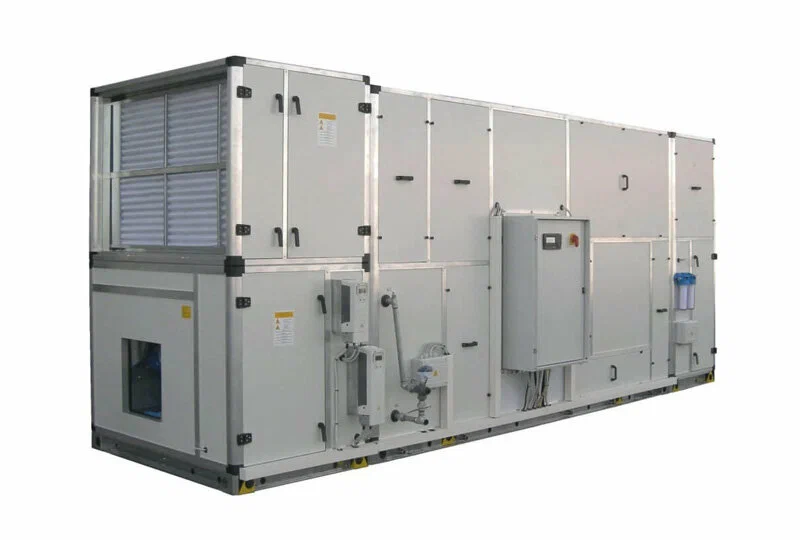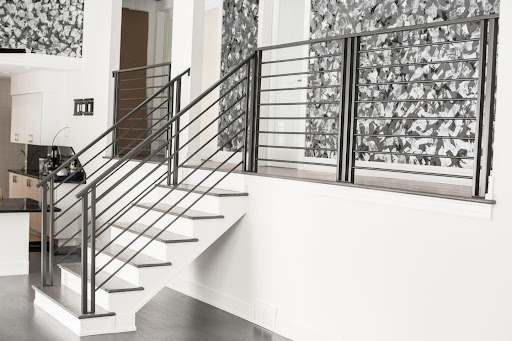Cooler, Cleaner, Smarter: Why All Commercial Buildings Need an Air Handling Unit

An air handling unit is the single most valuable piece of equipment in the commercial building’s HVAC system. It regulates the quantity of fresh air pulled in, regulates temperature, removes contaminants, and provides occupant comfort. Wherever located in office buildings, malls, hospitals, or factory buildings, there is a high-capacity air handling unit at the forefront of enhancing indoor air quality and energy efficiency. As more complex buildings get bigger, they need a stronger and more reliable AHU.
- Energy Conservation through Intelligent Temperature Control: Effective AHUs minimize energy wastage by controlling indoor temperature in detail. They even set out to maximize heating, cooling, and ventilation balance. New air handling units do not maintain running HVAC devices on full capacity but modulate airflow based on occupancy and temperature fluctuation. It minimizes overcooling or overheating demand, reducing electricity usage. This is a significant long-term cost saving for facility managers and building owners.
- Greater Users’ Comfort and Satisfaction: At too high a temperature, individuals become agitated and tired. At too low a temperature, one becomes distracted. An air handling unit maintains a steady indoor climate, which is comfortable for everyone. Whatever space they occupy in an office building, a mall, or a hospital, a proper consistent air system enhances their experience. Better retention rates within the workplace and greater traffic flow in commercial space are also brought about by this comfort.
- Green Building Certification Support: Sustainability is becoming the focus when it comes to issues in construction today. Green buildings are built as green as they can be, and energy efficiency in the ventilation is one method of achieving this. An AHU with high capacity guarantees that one passes the requirement for certifications such as LEED or BREEAM. Certification of this nature adds value to the property in the market, and even tenants who are environmentally conscious are drawn to it. A well-rated business building is also rated as more genuine and future-oriented by investors and business partners.
- Noise Reduction for a Peaceful Environment: Previous HVAC systems were disruptive and loud, particularly in offices, schools, or hotels where silence is vital. Properly designed air handling units can run silently with reduced noise generation. This eliminates distraction and brings about a more concentrated, quiet atmosphere. Improved insulation, properly built ducts, and soundproofing material in modern AHUs make this advantage possible without compromising efficiency.
- Consistent Airflow Over Extensive Areas: Commercial buildings are also intricately designed, and uniform airflow over various areas and levels must be provided. Equal distribution of the air is done so as to have no hot or cold spots by proper air handling unit installations. It is particularly necessary in the event of high-rise buildings or variable usage space buildings, i.e., conference rooms, cafeterias, or server rooms. Even airflow also avoids air pockets, which may be breeding grounds for odor or bacteria.
- Protection of Costly Equipment: Some business properties have essential infrastructure such as data centers, laboratories, or warehouses. These need a defined temperature and air conditions to operate at maximum levels of performance. An adequately designed air handling unit provides the degree of control needed to safeguard such sensitive areas. It steadies air conditions to avoid damage to precious equipment and minimize the likelihood of system failure, loss of data, or spoilage of products.
- Increased Lifespan of HVAC Facility: The functioning of an AHU is a contribution to the overall lifespan of the entire HVAC system. With proper air distribution, it prevents overloading of heating and cooling units, thus preventing premature wear and tear. That makes compressors, ducts, and other elements last longer with fewer replacements. An extended HVAC system also reduces service outages within the building, allowing seamless operations.
- Custom Solutions for Unique Building Needs: All commercial buildings vary in terms of size, design, and use. Effective air handling units are highly versatile and can be designed to suit precise conditions. Whether the building needs advanced filtration for a hospital, dry humidity management for an art gallery, or energy recovery functionalities for a manufacturing complex, AHUs can be designed to suit specifications. This versatility ensures that no matter the industry or geography, the air system functions exactly as demanded.
- Enhanced Measures for Fire and Smoke Management: In a fire, air handling units are tasked with directing toxic gases and smoke away from evacuation routes. Current AHUs have fire dampers and control systems that respond rapidly to emergencies. These systems allow for safer evacuation through the supply of breathing air in escape passages and restricting the spread of smoke. This feature is especially essential in highly occupied commercial establishments where evacuation speed may be critical.
- Reducing Carbon Footprint with Efficiency: Green options are being sought out by companies due to environmental concerns. Energy recovery-based air handling units and intelligent airflow control reduce a building’s carbon footprint. It not only helps the planet, but it also supports corporate sustainable initiatives. Companies can claim to be environmentally friendly in their right with efficient ventilation systems in their buildings.
- Future-Proofing Against Changing Climate Conditions: Weather patterns become less stable. Commercial properties have to handle hotter heatwaves, greater humidity, and air pollution. A working air handling unit allows building administrators to respond immediately to such issues. Being able to respond by manipulating settings, AHUs keep indoor conditions stable even if outdoor conditions are extreme.
- Shorter Return on Investment Time: Even though the upfront cost of putting in a high-efficiency air handling unit may be greater, the long-term financial savings are much greater than that. By saving on energy costs, having fewer maintenance requirements, and enhanced occupant comfort, building owners quickly pay for the unit themselves. The units also contribute to the resale value of the building, providing a good return over the long term.
Conclusion
Selecting the proper air system is no longer simply a matter of technical choice—it’s a business choice. The benefits of installing a new AHU extend well beyond standard ventilation. From energy efficiency and safety to health and enhanced building worth, the effect is undeniable. For commercial buildings that want to be at the forefront in performance and sustainability, collaborating with a reliable air handling unit manufacturer guarantees lasting achievement in an evolving world.







